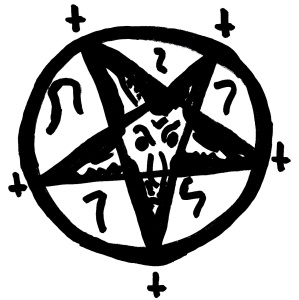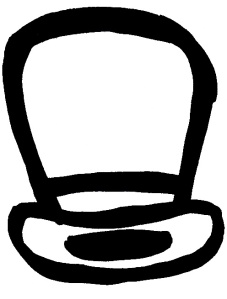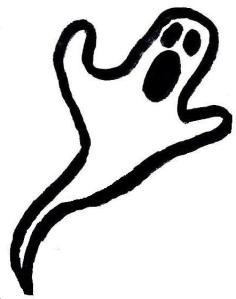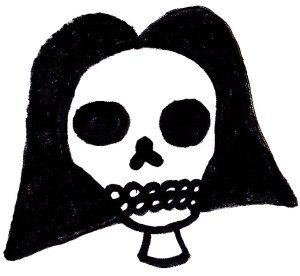

The horror anthology is a tried & true genre formula that opens up an opportunity for directors (often in collaboration) to experiment with several short-form narratives & modes of cruelty without having to fully commit to a single, dead end morality tale at feature length. Since the genre’s heyday in the 70s & 80s, however, it’s been stuck in a very rigid structural form that’s far more limiting than what its playfully experimental storytelling style calls for. A typical horror anthology presents a wraparound segment, say Debbie Harry preparing to cook & eat a child in Tales from the Darkside, that provides a reason or a context for its several short form stories to be told. It’s an easy, functional structure, but one that feels increasingly stilted in a modern context. The best horror anthologies in recent memory are the ones that attempt to break away from this classic formula by establishing a looser, more freeform mode of connecting their segments. Michael Dougherty’s Halloween-themed anthology feature Trick ‘r Treat was an interesting development in the genre in the way it repurposed the everything-is-connected structure of indie-dramedies from the aughts for something much more eerie & amusingly sinister. The 2016 feature Southbound picks up the torch from Trick ‘r Treat in this way, dropping a lot of that film’s campy humor, but keeping & developing its ideas on how the horror anthology genre can potentially be reshaped & modernized.
Directed by an art collective known as Radio Silence, who had a hand in the recent anthology feature V/H/S, Southbound escapes the anthology genre’s wraparound segment requirement by anchoring its interwoven narratives to a single location: a desert hellscape. Much like the straight-to-VHS minor cult classic Highway to Hell, Southbound finds the desert to be a perfectly appropriate (and attractively affordable) blank slate backdrop for its supernatural, hellbound terrors. This is a Tales from the Crypt-meets-Twilight Zone collection of morality tales in which several travelers on “a road that doesn’t seem to exist” feel remorse for crimes they’ve committed (ranging from abandoning a friend or texting while driving to full-blown homicide) and, thus, end up in a continuous loop that looks, feels, and sounds a lot like purgatory. Each tormented soul, from a business man to a small time crook who recently committed murder to the lead singer of a Coathangers-style punk band, attempts to rationalize their lives’ mistakes & convince themselves they’re not in the wrong, but their guilt continues to torment them all the same along that “long road to redemption.” Also eager to torment them are the much more literal threats of 70s era Satanic cults, vampiric demon alcoholics, cruel EMT phone operators, and floating jellyfish-esque Angels of Death that recall CGI recreations of Harryhausen’s stop motion skeleton army. Southbound is loaded with the same body horror, spooky ghosts, and general devilry that populates just about every modern horror you can name. It even falls into that faux 1970s vibe of recent productions like We are Still Here & The Conjuring that has become such a ubiquitous trend as of late. The film finds its own eerie groove in its supernatural dilemmas, though, where everything just feels off, as if in a nightmare or a stress dream. It also wraps around to complete its own circle in an impressively ambitious way, a closed loop terror I tend to fall for in similar fare like the severely underappreciated Triangle.
It’s easy to fault Southbound for common 2010s horror tropes like cribbing from The Devil’s Rain-era Satanism or borrowing some John Carpenter notes in its score or using an old, innocuous pop song in a spooky context (in this case a girl group singing “Don’t let the party end” in an endless, horrific purgatory), but the film really does push itself in ambition & weird ideas in other ways. The acting & the CGI can be a little weak, but the film more than makes up for it in its supernaturally uneasy mood and in its willingness to linger in a situation once its initial shock has already settled. For instance, many a horror anthology might reveal a Satanic cult as a threat in a stray segment, but Southbound puts care in its revelation of that threat, which slips out during the following summertime prayer: “Oh, Divine One, we offer our gratitude for this beast, for this blood, for these vessels of anew. We bow to you, for you are all-knowing. We offer ourselves to you, for you are the master” and continues to slowly develop from there. Weird stuff. I also feel like I’m burying the lede here by failing to mention until this point that The Jesus Lizard/Scratch Acid front man David Yow stops by as an unhinged feature player, one that humorously demands the desert road’s demonic inhabitants “Quit being so fucking mysterious!” The one stretch of Southbound that kind of lost me was the final segment’s indulgence in one of my least favorite genres, the home invasion thriller, but that’s mostly a matter of taste & eventually it proves itself useful by completing the film’s closed circuit of desert-bound purgatory horror. As a modern horror anthology, the film mostly delivers both on its genre-specific surface pleasures & its interest in boundary-pushing narrative innovation, which is more than you can say for most modern horror films it resembles. Besides, it features David Yow wielding a shotgun like a raving lunatic. Where else are you going to find that? (Please don’t ever tell me there’s an answer to that question.)
-Brandon Ledet











